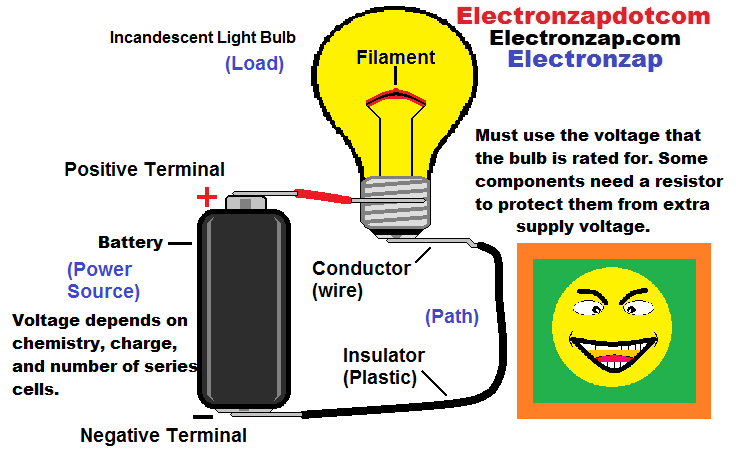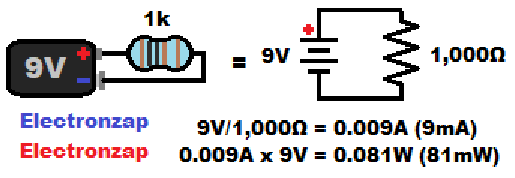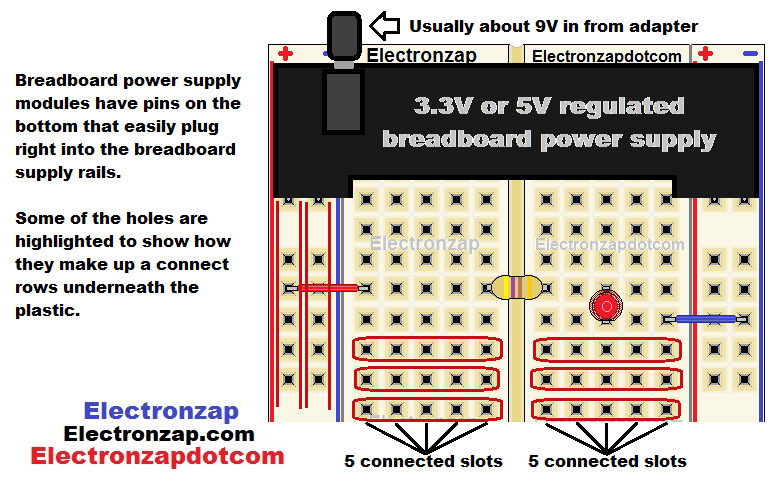Table of Contents
You need voltage and current to power electronics. A power source provides both voltage and current.

Anything that is used to provide voltage and current to an electric load is that load’s power source.
Bench Power Supply:
A bench power supply is commonly used to provide power to prototype circuits and many other general uses. They usually plug into an AC power outlet and convert that power to DC. The DC power it provides can be attached to a load that requires DC power.
- Adjustable voltage and current settings using dials or buttons.
- Voltage source: Maintains a set voltage to a load unless the load requires more current than the maximum current that the power supply is set to provide.
- Current source: Maintains a set amount of current to a load unless the load requires more voltage than the power supply is set to provide in order for that amount of current to flow.
- Short Circuit Protection is usually built in.
Battery:
Batteries store charge (voltage and current).

- Portable: Batteries store charge, so they can power devices on the go.
- Capacity: Given in Amp hours and Watt hours.
- Series connections: You connect cells/batteries in series when you need a higher voltage. All series cells need to have the same capacity and should all be equally charged when connected.
- Parallel connections: Each parallel battery adds to the total capacity (Amp hours) of the battery system. They all must be at the same voltage when connected in parallel so that high current doesn’t flow from the higher voltage battery/cell into the lower voltage one. If the system also has batteries connected in series, then those series batteries also need to be combined in such a way as to have the same capacity as all the rest of the batteries they are in series with.
- Chemistry: What the cells/batteries are made out of determines what their voltage will be at various states of charge. The chemistry also influences many other characteristics, such as weight for the amount of capacity, voltage curve, rechargeable or not, safety, etc.
Breadboard power Supply and other regulators:
You generally power a breadboard power supply with a wall AC to DC adapter. 9 volts works well. The breadboard power supply has pins which can be plugged into the breadboard rails meant for supply voltage. A 9V battery with a battery snap to proper sized barrel plug connector can be used as well.

- Can typically be set to supply 5V, 3.3V, or 0V to either one, or to both of the rails.
- Regulators (which breadboard power supplies typically are) drop the supply voltage in a similar way to adding resistance. The extra voltage builds up across the regulator and creates waste heat.